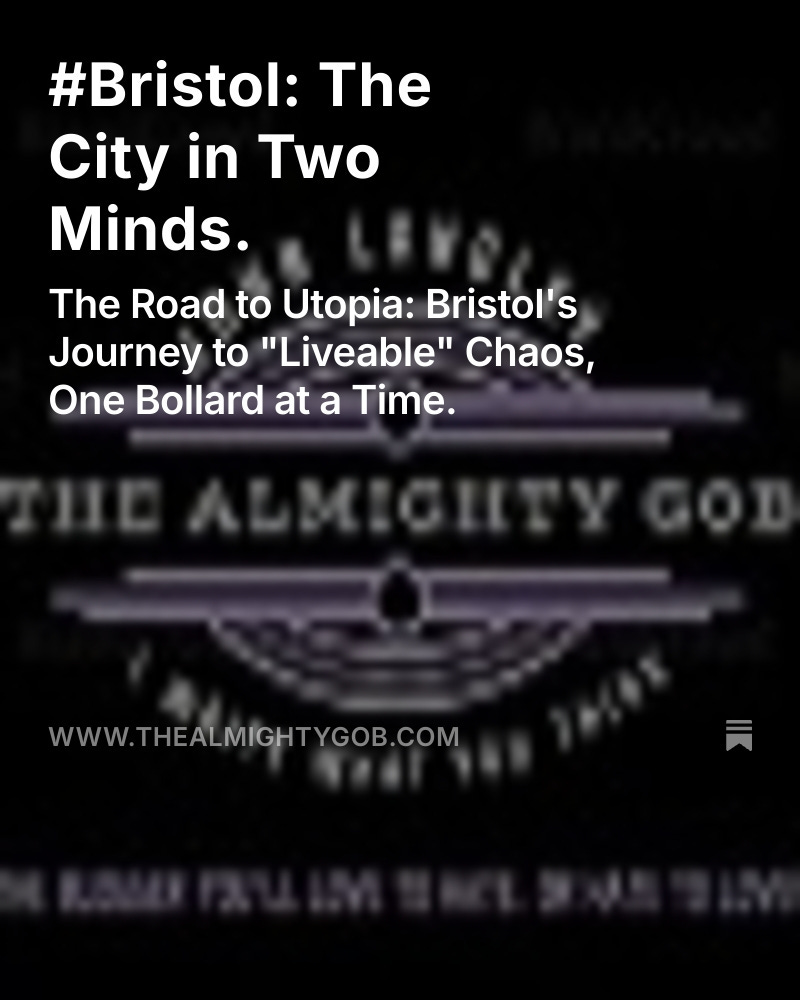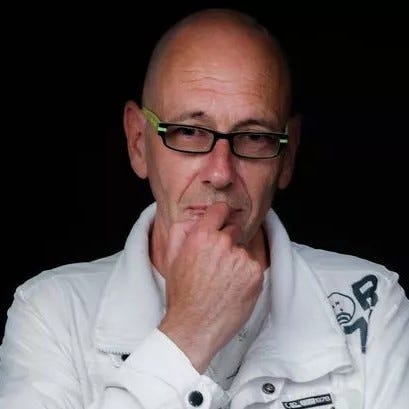#Bristol: The City in Two Minds.
The Road to Utopia: Bristol's Journey to "Liveable" Chaos, One Bollard at a Time.
Alright, dear reader, another day, another satire. As my consultant at the BRI so helpfully informed me, you're stuck with me, dear reader, for at least a further six months. This body simply will not give in! Anyway, on today's jolly jape. The Bristol Post, ever the oracle of local enlightenment, tells us in a headline, "Bristol's controversial LTN trial shows a city torn in half." Well, who'd have guessed it?
Anyway, this schizophrenic city – or, at least it would be if it wasn't in two minds already – aims to make walking and cycling safer in places like Southville, because it abjectively failed on the other side of the city. The Post goes on to report that, "Last year Bristol City Council consulted the public about traffic problems in Bedminster, Southville, Windmill Hill and Totterdown, before designing 'all sorts of changes.'" You know, like painting bizarre pieces of artwork on pavements and roads, because they can.
Since that consultation, transport chiefs at the council have written a public engagement report, presumably with the same crayons children use to mark hopscotch games on pavements. This report, looking at the results of what people think, has been shared with Arup, a company that sounds like medication for consistent burping, who are working with the council on the project, but has not yet been made available to the public because, so far, their plans are far too sensible, and their final bill isn’t quite high enough. Leading councillors on the strategy and resources policy committee were urged to publish this report on Monday, June 16, but simply forgot
A similar project in Barton Hill and St George, the East Bristol Non-Liveable, and Quite Unbearable Neighbourhood, proved very controversial with complaints about a public consultation. Suzanne Audrey, a local activist, cut to the chase: "Public consultation is an important part of democratic engagement. I’m sure we all know there have been problems with Bristol City Council consultations in recent years — Western Harbour and East Bristol now Non-Liveable Neighbourhood being examples. Currently, the public engagement report for South Bristol Liveable Neighbourhood, which I know exists, is not available to the public nor in particular the people of South Bristol. But Arup has seen it, and they are no doubt developing further chaos. Please publish the report, learn from previous mistakes and keep the public informed — and ensure their views are treated with respect.” You know, unlike Bristol’s motorists.
The aim of the liveable neighbourhood will be making streets safer and quieter, encouraging more people to walk or cycle instead of driving. This includes improving air quality and access to local shopping areas, such as East Street and North Street, which will see shops closing as a result. Green Councillor Tony Dyer, leader of the council, offered solace: “I’ve spoken to the chair of the transport policy committee, L Pondweed, [Green Cllr Ed Plowden], who is responsible for the delivery of the liveable neighbourhood in South Bristol. He’s reassured me that the report will be made public as soon as his therapy for the fetishisation of LTN's improves considerably.”
What's Next for Bristol's Traffic Adventures, you may ask?
Next steps will be consulting the public again, this time on detailed designs of how the liveable neighbourhood could be rolled out like a magic carpet. This could include installing planters and bollards to stop drivers using residential roads as rat runs and enable vandalism, diverting drivers instead onto main roads to create congestion. Or, more likely, a high-speed lane to psychiatric services. Driving routes could change, but all of the area will still be accessible by car for anyone who has the patience of a saint.
Bus gates are another option, which block general traffic but allow buses and taxis. More bike hangars could be installed to help cyclists safely store their bicycles, and local vandals to completely wreck them too. Better pedestrian crossings and new bike lanes might also be rolled out with even more glorious abstract art to amuse and even bewilder us all.
Actual changes to the roads are expected to be installed next year and early 2027. So, buckle up, dear reader, the glorious, ongoing satire of Bristol's traffic adventures is far from over!



